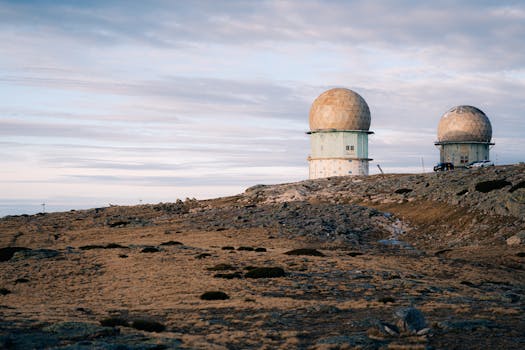
**
UK-Led Swarm Mission Revolutionizes European Space Weather Forecasting: Protecting Critical Infrastructure from Solar Storms
The UK is spearheading a significant advancement in European space weather forecasting with its ambitious Swarm satellite mission. This groundbreaking initiative aims to dramatically improve our understanding and prediction of solar storms, protecting vital infrastructure and safeguarding crucial societal functions across the continent. The mission utilizes a constellation of three identical satellites, providing unprecedented data on the Earth's magnetic field and its interaction with the solar wind, a crucial factor in space weather events. This enhanced forecasting capability has profound implications for various sectors, from power grids and satellite communications to aviation and navigation systems.
Understanding the Threat of Space Weather
Space weather, driven by solar activity like solar flares and coronal mass ejections (CMEs), poses a significant threat to modern technological society. These powerful events can disrupt the Earth's magnetosphere, inducing geomagnetic storms that impact various systems:
- Power grids: Geomagnetically induced currents (GICs) can overload transformers and cause widespread blackouts, as seen in the 1989 Quebec power outage.
- Satellite operations: Radiation from solar storms can damage satellite electronics and disrupt communication and navigation systems, impacting GPS accuracy and satellite television broadcasts.
- Aviation: High-energy particles from solar storms can affect aircraft navigation and communication systems, particularly at high altitudes.
- Radio communications: Ionospheric disturbances can disrupt high-frequency radio communications, impacting both amateur and professional users.
The Swarm mission's advanced data collection and analysis are critical in predicting the intensity and timing of these events, allowing for mitigation strategies to be implemented. This proactive approach significantly reduces the risk of widespread disruption and substantial economic losses.
The Swarm Constellation: A Trio of Space Weather Sentinels
The Swarm mission, launched in 2013, consists of three identical satellites orbiting Earth at different altitudes. This multi-point measurement strategy provides a highly detailed 3D picture of the Earth's magnetic field, revealing subtle variations influenced by space weather. The data collected allows scientists to:
- Model the Earth's magnetic field: Precisely mapping the magnetic field's strength and direction is vital for understanding how it interacts with the solar wind.
- Identify geomagnetic disturbances: Swarm data helps scientists pinpoint the onset and intensity of geomagnetic storms, providing crucial early warning signals.
- Separate various magnetic field sources: The mission distinguishes between the internal magnetic field generated by Earth's core and the external magnetic field influenced by the solar wind and ionosphere. This differentiation is crucial for accurate space weather forecasting.
- Improve space weather models: The high-resolution data allows scientists to refine and improve space weather models, leading to more accurate and timely predictions.
This enhanced understanding translates directly into more effective forecasting, providing vital information to infrastructure operators and other stakeholders to prepare for impending events.
Enhancing European Space Weather Forecasting Capabilities
The UK's leadership in the Swarm mission significantly boosts Europe's overall space weather preparedness. By analyzing the comprehensive data, scientists can develop more sophisticated forecasting models, leading to:
- Improved early warning systems: Providing sufficient time for power grid operators to implement protective measures and minimize potential disruptions.
- Enhanced satellite protection strategies: Enabling satellite operators to take proactive measures to safeguard their assets from radiation damage.
- Better aviation safety protocols: Allowing airlines to adjust flight paths or delay flights to mitigate risks associated with solar storms.
- More resilient communication networks: Helping communication providers develop more robust and resilient networks capable of withstanding space weather events.
The collaborative nature of the project, involving researchers and institutions across Europe, underscores the continent's commitment to safeguarding critical infrastructure from the potential impacts of space weather. The data from the Swarm mission is openly accessible, promoting innovation and further development in the field.
Beyond Swarm: Future Missions and Technological Advancements
While Swarm has revolutionized our approach to space weather forecasting, ongoing research and technological advancements are constantly refining our understanding. Future missions, utilizing advanced sensors and data analysis techniques, are being planned to further improve the accuracy and timeliness of predictions. These advancements are crucial for maintaining the resilience of our modern technological infrastructure. The focus is on developing:
- More advanced satellite constellations: Utilizing larger constellations of satellites for more comprehensive data coverage.
- Improved data assimilation techniques: Combining satellite data with ground-based observations to improve the accuracy of models.
- Artificial intelligence and machine learning: Utilizing AI and machine learning to automate data analysis and improve prediction accuracy.
The continued investment in space weather research and the development of innovative technologies are essential for protecting our increasingly interconnected world from the potentially devastating impacts of solar storms.
Conclusion: A Shield Against Solar Storms
The UK-led Swarm mission represents a significant leap forward in European space weather forecasting. By providing unprecedented detail on the Earth's magnetic field and its interaction with the solar wind, the mission provides the critical data needed for more accurate and timely predictions of geomagnetic storms. This increased preparedness is vital for protecting critical infrastructure and ensuring the continued functioning of essential services, highlighting the importance of international collaboration and investment in this critical area of space science. The future of space weather forecasting is bright, promising a more resilient and secure technological landscape.




















